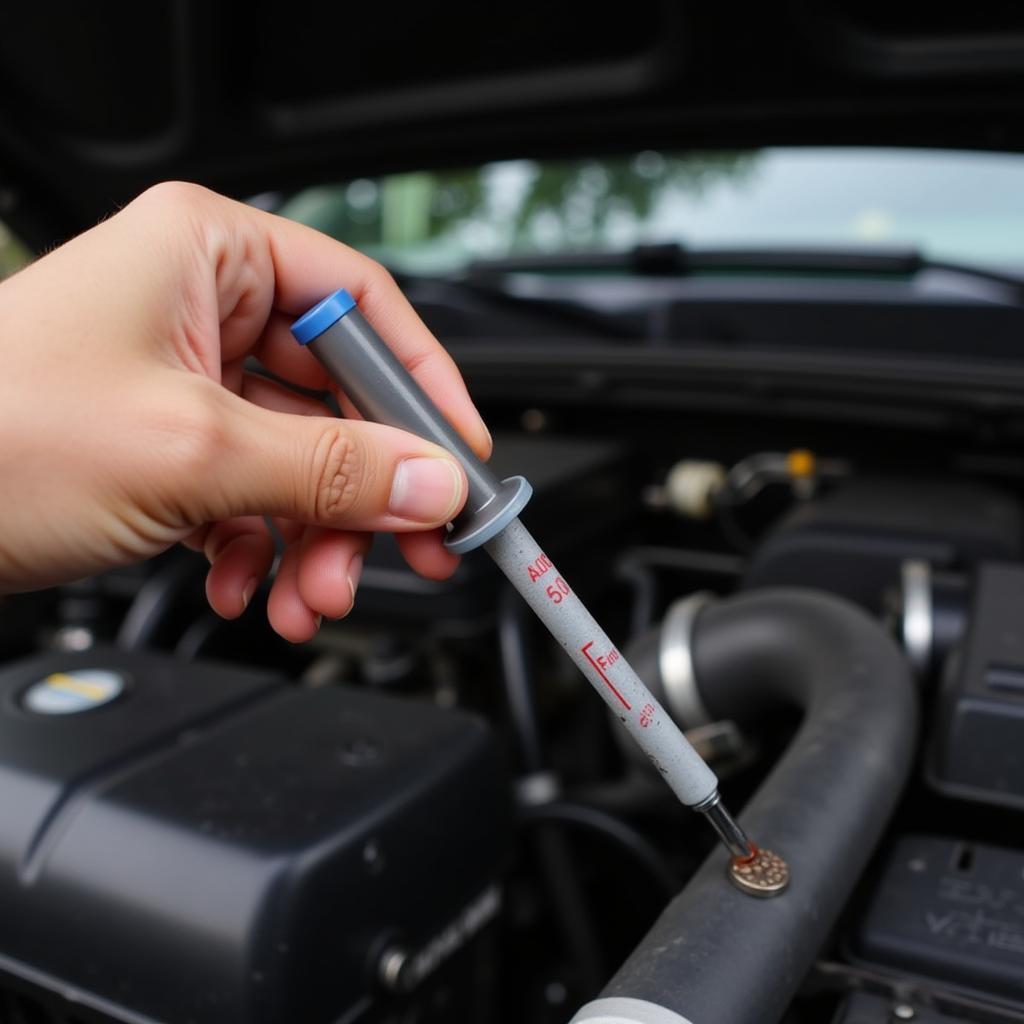Summer’s here, and your car AC is blowing hot air? Don’t sweat it! While some car AC problems require a professional touch, many are surprisingly DIY-friendly. This guide will equip you with the knowledge to diagnose and potentially fix your car’s AC yourself, saving you time and money.
Understanding Your Car’s AC System
Before diving into repairs, it’s crucial to grasp the basics. Your car’s AC isn’t just about cold air; it’s a closed system involving refrigerant, a compressor, condenser, evaporator, and more. The refrigerant circulates, absorbing heat from the cabin and releasing it outside, leaving you with that refreshing coolness.
Common Car AC Problems and Their Causes
Identifying the root cause is the first step to an effective fix. Here are some common culprits:
- Low Refrigerant: This is often the case if your AC blows cool but not cold air. Leaks in the system can lead to refrigerant depletion.
- Electrical Issues: Malfunctioning switches, blown fuses, or a faulty blower motor can disrupt the AC’s operation.
- Compressor Failure: The compressor is the heart of the system, and if it fails, your AC won’t work at all.
- Clogged Condenser: Located at the front of your car, the condenser can get clogged with debris, restricting airflow and reducing cooling efficiency.
 Car AC System Components
Car AC System Components
“Many people rush to a mechanic for minor AC issues,” says seasoned mechanic John Miller, “but with a little knowledge, they could easily diagnose and even fix these problems themselves.”
How to Fix Car AC Yourself: Step-by-Step
1. Diagnosing the Problem
- Check the Airflow: Is the air weak even at the highest fan setting? This could point to a blower motor issue.
- Feel the AC Lines: With the engine running and AC on max, carefully feel the lines leading to the firewall. One should be cold, the other warm. If not, your compressor might be the problem.
- Inspect the Fuses: Consult your owner’s manual to locate the AC fuse(s) and check for any blown ones.
2. Simple Fixes You Can Try
- Recharge the Refrigerant: If you suspect low refrigerant, you can purchase DIY recharge kits. However, proceed with caution and follow the instructions carefully, as refrigerant is hazardous.
- Replace the Cabin Air Filter: A dirty cabin air filter can restrict airflow. This is a cheap and easy fix you can do yourself.
- Clean the Condenser: Use a garden hose with a gentle spray nozzle to clean any debris from the condenser fins.
3. When to Call a Professional
While some repairs are DIY-friendly, others require specialized tools and expertise. If you’re dealing with:
- Compressor issues
- Electrical system malfunctions
- Suspected leaks in the AC system
It’s best to leave it to the pros.
“Remember,” advises Miller, “attempting complex repairs without proper knowledge can lead to further damage and cost you more in the long run.”
Conclusion
Understanding How To Fix Car Ac Yourself can empower you to tackle minor issues and save money. However, knowing your limits is key. While simple fixes like recharging refrigerant or cleaning the condenser can be done DIY, more complex problems are best left to the experts. If you’re unsure, it’s always best to err on the side of caution and seek professional help. Need expert assistance with your car’s AC system? Contact AutoTipPro today at +1 (641) 206-8880 or visit our office at 500 N St Mary’s St, San Antonio, TX 78205, United States. We’re here to keep you cool and comfortable on the road!






Leave a Reply